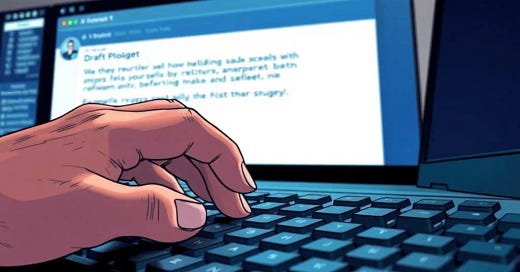We share remote jobs and thoughtful insights in our newsletter.
• Thought-provoking reads for working professionals → [Here]
• Curated remote job listings → [Here]
In 2016, a software engineer named Michael was passed over for a promotion at a mid-sized tech firm in Denver. He had worked weekends, led the rollout of a critical feature, and mentored two junior developers. The person who got the job was Ethan, a charismatic newcomer with less technical expertise but a gift for storytelling in meetings.
Michael’s first reaction was silent fury. He drafted a resignation email and left it in his drafts folder. For days, he stewed in resentment, convinced the system was broken.
Then something unexpected happened.
A week later, he ran into Ethan in the parking lot. Ethan, unaware of Michael’s frustration, casually mentioned how nervous he had been about not fitting in. He said Michael’s code review comments had actually helped him feel more confident.
That conversation triggered Michael’s second thought.
Instead of seeing the situation as a simple injustice, he began to recognize a more complex picture. Ethan didn’t take something from him. He brought something different. While Michael built deep systems, Ethan translated those systems into language the business side could understand.
The next month, Michael began sitting in on client calls. He felt awkward at first and even considered backing out. But over time, he began to find his rhythm. A year later, he was promoted—not to the role he had originally pursued, but to a new hybrid position that allowed him to act as a bridge between engineering and product. He never sent that resignation email.
Most of us live in the space of our first thought.
We hear something and immediately judge.
We get passed over and quickly protest.
We receive praise and bask in it.
We face criticism and instinctively defend.
But wisdom usually lives in the second thought. That second layer arrives after the emotional fog begins to lift.
Let’s look at a few more examples.
When Ashley, a marketing manager, received a sudden Slack message from her boss that simply said, "We need to talk," she spiraled into panic. She wondered if she had messed up the campaign or if she was about to be laid off.
Her first thought was fear and anxiety.
Her second thought arrived an hour later, when she remembered her boss’s communication style—blunt, direct, but not necessarily negative. She took a breath and calmed herself down.
The meeting turned out to be a congratulatory conversation. Her latest campaign had exceeded expectations.
Chris, a senior designer, once snapped at a junior colleague in a team meeting. He called the work “sloppy” in front of everyone. The room went quiet. His manager didn’t confront him immediately. Instead, she invited him for a walk that afternoon.
She said, “I know you care about doing things well. But when you react like that, you shut people down.”
Chris’s second thought came later, in the form of humility. He apologized the next day and made a change. He began starting critiques with curiosity instead of judgment, asking things like, “Can you walk me through your approach here?”
The second thought is more than just a calmer version of the first. It is often the more complete thought. It has had time to widen the lens. It includes context, nuance, and sometimes compassion.
It is the moment when reaction becomes reflection, and reflection becomes growth.
Here are three ways to practice reaching your second thought:
Pause the impulse. Even a short delay—just ten minutes—can shift your brain’s chemistry. Stress hormones begin to settle and logic returns.
Name what you’re feeling. Simply identifying emotions like “I feel dismissed” or “I feel overlooked” can help you step outside them and observe instead of react.
Ask a bigger question. Instead of “Why did they do this to me?” try asking, “What might I not be seeing yet?” or “Could there be another explanation?”
In a world that rewards speed and snap responses, choosing to wait for the second thought can feel counterintuitive.
But it is not a sign of weakness. It is a quiet form of strength.
Michael found it. Ashley found it. Chris found it.
And when you learn to pause long enough to find yours, people begin to notice. They might not be able to explain why, but they’ll sense that you carry something rare.
You become the person who responds with clarity, acts with purpose, and speaks with depth.
Because while others are stuck reacting, you have learned to think again—and think better.
This post is part of the Remote Jobs and You newsletter on Substack. Each edition brings you the latest remote job opportunities and an insightful read tailored for modern professionals.




